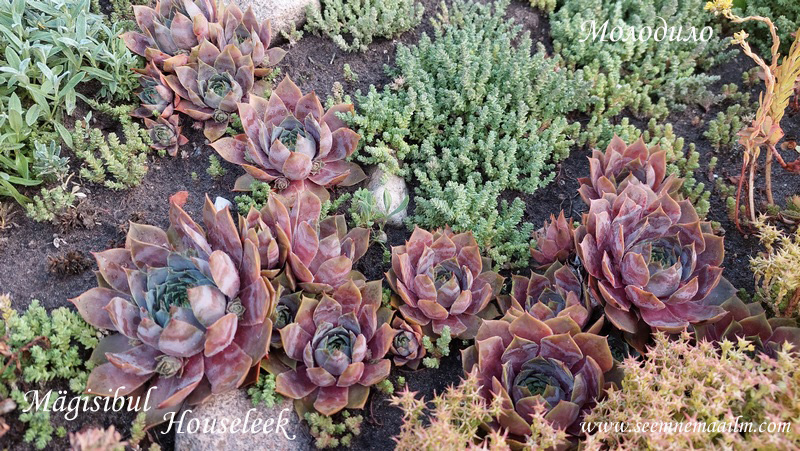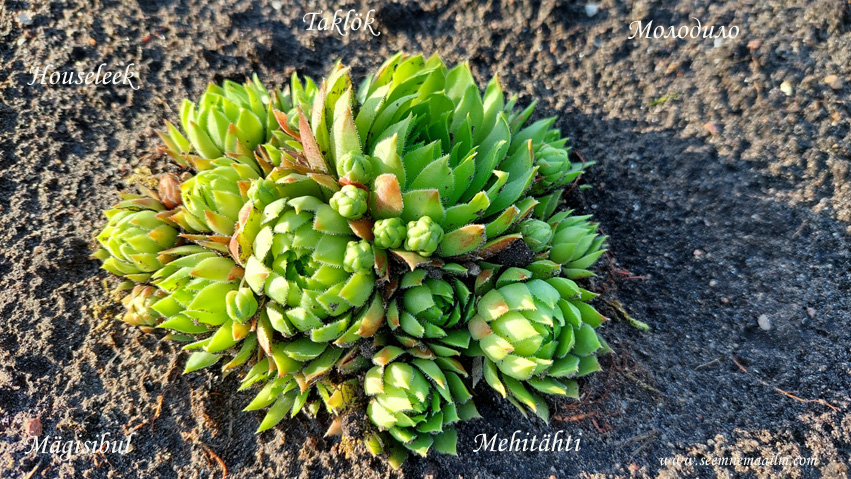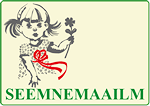A fantastic invention of nature that is not afraid of frost and drought!
Beautiful rosettes of fleshy leaves are spherical or slightly flattened, up to 20 cm in diameter and about 8 cm high. The leaves are ovate-lanceolate, pointed, green with a reddening edge.
Blooms in July-August. Used for rockeries, alpine gardens, can be used in original container compositions.
This name unites varieties and forms of complex hybrid origin.
Name: comes from the Latin words "semper" - always and "vivus" - alive, for the ability of leaf rosettes to remain viable in extreme conditions of existence. At the moment of flowering, the young resemble a brood hen surrounded by numerous chickens. Hence its popular English name "Hen and Chickens".
With the constant perfection of their rosettes, the young are infinitely varied in the shape and color of the leaves. The first experiences of using rejuvenated in landscape design date back to the Middle Ages. The inhabitants of medieval Europe completely planted them with the flat roofs of their houses. The memory of this is preserved in the name of one of the species - roofing rejuvenated (Sempervivum tectorum). This plant was also used as a living tile in England.

Location: all species require well-lit locations but can tolerate light shading. In the shade, the plants lose their compactness, their leaves become pale green, elongate.
Soil: thrive on all cultivated soils, avoiding moist soils. But dry, poor, sandy soils are preferred. If the soil contains a lot of nutrients, then although the plant forms larger rosettes, their color will be somewhat paler than usual, and they themselves will be less resistant to overwintering. Soils for all species are desirable neutral or slightly alkaline.
Planting: plants are planted so that the distance between specimens of large species is 10-15 cm, small ones - 3-5 cm. After a year, the daughter rosettes will completely cover the soil surface.
Care: consists in the timely removal of weeds and faded inflorescences along with a dead rosette of leaves. Rejuvenated only once - after planting. In moist soil, the lower leaves in the rosettes begin to rot. This is the first sign of excess moisture.
Reproduction: usually vegetatively, seed reproduction is impractical, since most species form a large number of small daughter rosettes. Their separation and planting are usually carried out in the spring, sometimes in the summer. Very small rosettes are grown on the ridges, large ones are immediately planted in a permanent place, maintaining a distance of 10 cm. Seeds are sown in February-March to a depth of no more than 1 mm. Germinate at a temperature of + 20 °C. Seedlings appear in 3-5 days. Seedlings are kept in the light, protecting them from the hot sun. They are planted in a permanent place at the end of June - July.
Rejuvenated easily tolerates a long journey in postal parcels and does not need special packaging.
Usage: very effective in group plantings on the south side of shrubs, in carpet compositions, on rocky areas and slopes.
Rejuvenated are very good in groups of different varieties and species against the background of boulders.
Partners: does not get along with lush plants! (fit Dianthus, Saxifraga, Sedum).

Houseleek, hens and chicks.
Why are Houseleek persistently planted in rock gardens?
The plants make wonderful multi-colored "rugs" that look spectacular anywhere in the garden. Moreover, with this type of planting, plants with small rosettes look especially elegant.
Sempervivum feels best on sand (without watering). In this case, both the rosettes will be bright and the flowering will be abundant. In addition, the plants will survive "rotten" winters without losses.
And would like to add a few more observations to this:
• Sempervivum are not able to overwinter indoors. Compositions of young, planted in bowls, overwinter perfectly under the snow.
• Sempervivum, planted in open ground in October-November, usually die.
• The plants reproduce remarkably well by seeds, and when grown from seeds they produce a variety of shades of the parent color.
• Never plant young plants near tall trees. They wither and die under fallen leaves.
• Sempervivum grown in beds (for commercial purposes) must be replanted every 3 years. After this period, the plant clumps become convex, the rosettes become smaller. But, by the way, such "living hills" look good in flower beds and on alpine slides.
• There is an extraordinary confusion in the names of varieties. Those wishing to start a serious collection would do well to buy plants with the same name in different nurseries and compare samples.
• After mass flowering, it is necessary to cut off the flower stalks so that the plants do not start to sow. By the way, not everyone probably knows that rosettes that throw out flower stalks are doomed to die (however, this is compensated by numerous vegetative offspring).












